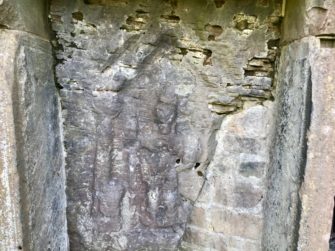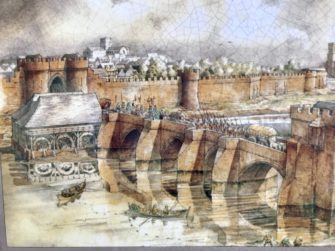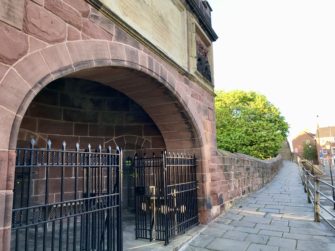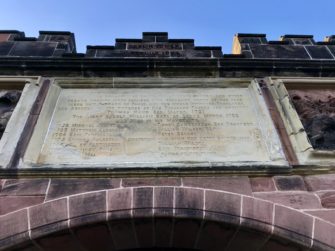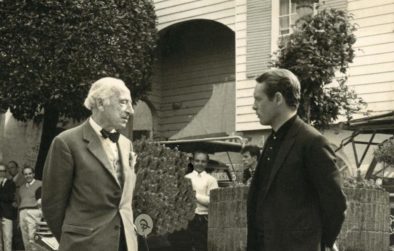I took my children to the local park for years.
But it took ages for me to realise there is a 2,000-year-old historical artefact near the swings.
The park is Edgar’s Field, located in the Chester district of Handbridge, and the relief carving is the Roman goddess Minerva [pictured above], cut into the former quarry face.
The shrine is believed to have been carved into the sandstone in the second century AD.
Historic England believes it is the only such site still in its original location in Europe.
During my lockdown walks, I often come for an audience with Minerva.
Gracious goddess
Minerva was the patron of art, wisdom and craftsmen, amongst others. Later in Roman history, she became the goddess of war, too.
In many ways, she is similar to the Greek goddess Athena with temples built in her honour.
The effigy is often portrayed wearing a chiton, which is an ancient Greek tunic, and a helmet.
Many images show her holding a spear and a shield, to represent her interest in war.
But she can also be found offering an olive branch to the defeated. Minerva was a gracious goddess, who had sympathy for those her armies had vanquished.
Secret site
The shrine, first built by quarrymen working on then quarry during Chester’s Roman era, may look like a hobbit house.
But the weathered rock was actually an important site of ancient worship.
The quarrymen, excavating the huge blocks of sandstone used to build Chester’s Roman wall, first carved the effigy to honour Minerva.
They made offerings and prayed for safety in the course of their gruelling, risky labour.
Today, it now forms part a leafy park on the banks of the River Dee, situated to the south of the city centre.
Sadly, Minerva looks a bit the worse for wear — the weather and vandalism have seen to that.
But you can still pick out her figure, holding a spear and wearing a helmet, an owl over her right shoulder.
The awning over the shrine is a 19th-century addition, placed there to ward off further damage.
Hidden history
Edgar’s Field dates from the Saxon period and gets its name from King Edgar, the great-grandson of Alfred the Great, who held a council in or near the field in the year 973 AD.
From here the king visited nearby St Johns Church, Chester’s original cathedral, first built in 689 AD.
Writers described a scene of Edgar being rowed up the Dee by eight princes as an act of submission — a romantic image forever associated with Chester.
Edgar’s Field was laid out as a public park by the first Duke of Westminster, Hugh Lupus Grosvenor, who presented it to the City of Chester in 1892 as an act of philanthropy.
It’s an eerily quiet place right now, especially with the children’s playground closed for now for public health reasons.
But I love the way I learnt, pushing kids on swings and teaching them to ride bikes on the slope, that there’s a bone-fide Roman goddess at the end of the street.
The world changes but Minerva waits, serene and stoic, keeping watch over us all from her freeze-frame stone tomb.
Gazetteer
Friends of Edgar’s Field https://edgarsfield.weebly.com
Howard Williams, Professor of Archaeology at the University of Chester https://howardwilliamsblog.wordpress.com/2019/02/15/chesters-minerva-shrine-to-get-a-digital-afterlife/
- Liked this? Try also Lockdown loafing: gone fishing.
- Sign up to my newsletter for more articles and writing workshops.
